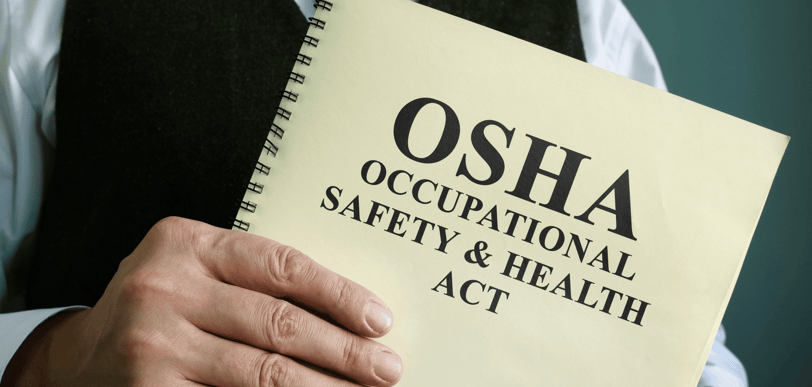OSHA Guidelines for Pharma Industry: Ensuring a Safe Work Environment
The pharmaceutical industry is a cornerstone of global healthcare, but it also comes with unique workplace hazards, including chemical exposure, ergonomic risks, and equipment-related accidents. To address these risks and ensure the safety of employees, the Occupational Safety and Health Administration (OSHA) has established comprehensive guidelines for workplace safety. Here, we explore key OSHA guidelines and how pharmaceutical companies can implement them to create a safe work environment.
1/28/20252 min read


1. Hazard Communication Standards (HCS)
Pharmaceutical workplaces often involve the handling of hazardous chemicals. OSHA’s Hazard Communication Standards require employers to:
Develop and maintain a written hazard communication program.
Ensure all chemicals are labeled with clear hazard warnings.
Provide employees access to Safety Data Sheets (SDS) for all chemicals.
Conduct training on chemical hazards and safe handling practices.
By adhering to HCS, pharma companies can minimize risks associated with chemical exposure and ensure workers are informed and prepared.
2. Personal Protective Equipment (PPE)
Proper use of Personal Protective Equipment (PPE) is essential in pharma plants to protect workers from exposure to harmful substances. OSHA mandates employers to:
Conduct hazard assessments to determine necessary PPE.
Provide appropriate PPE such as gloves, masks, goggles, and protective clothing.
Train employees on the correct use, care, and maintenance of PPE.
Regularly inspect and replace worn or damaged PPE.
3. Process Safety Management (PSM)
OSHA’s Process Safety Management standards apply to workplaces handling hazardous chemicals in large quantities. Key requirements include:
Conducting thorough process hazard analyses (PHA).
Developing and implementing written operating procedures.
Providing regular training for employees involved in hazardous processes.
Establishing emergency response plans for chemical releases.
PSM ensures that pharmaceutical manufacturing processes are safe and well-controlled, reducing the likelihood of accidents.
4. Ergonomic Safety
Repetitive tasks, manual material handling, and prolonged standing can lead to musculoskeletal disorders (MSDs). OSHA’s ergonomic guidelines recommend:
Redesigning workstations to reduce repetitive motions.
Providing ergonomic tools and equipment.
Rotating tasks to minimize repetitive strain.
Training employees on proper lifting techniques and posture.
Addressing ergonomic risks can improve worker productivity and reduce workplace injuries.
5. Machine and Equipment Safety
Pharmaceutical facilities use various machines and equipment that pose potential hazards. OSHA’s guidelines emphasize:
Installing machine guards to prevent accidental contact with moving parts.
Regularly maintaining and inspecting equipment.
Training workers on safe machine operation.
Implementing lockout/tagout (LOTO) procedures to control hazardous energy during maintenance.
Proper machine safety practices can significantly reduce the risk of injuries.
6. Emergency Action Plans (EAP)
Pharmaceutical workplaces must be prepared for emergencies such as fires, chemical spills, and natural disasters. OSHA requires employers to:
Develop and communicate an Emergency Action Plan.
Conduct regular emergency drills.
Install and maintain fire extinguishers, alarms, and eyewash stations.
Designate and train emergency response teams.
A well-prepared workforce can respond effectively to emergencies, minimizing harm.
7. Recordkeeping and Reporting
Accurate recordkeeping is essential for monitoring workplace safety. OSHA mandates that employers:
Maintain records of work-related injuries and illnesses.
Report severe injuries and fatalities within specific timeframes.
Use OSHA’s Form 300 to log incidents.
Regular review of these records helps identify patterns and implement preventive measures.
8. Training and Education
Training is a cornerstone of OSHA’s safety guidelines. Pharmaceutical companies must:
Provide initial and ongoing safety training for all employees.
Tailor training programs to specific job roles and hazards.
Evaluate the effectiveness of training and make necessary improvements.
Empowered and educated employees are better equipped to maintain a safe work environment.
Conclusion
Compliance with OSHA guidelines is not only a legal obligation but also a moral responsibility for pharmaceutical companies. By prioritizing hazard communication, PPE usage, ergonomic safety, and emergency preparedness, pharma businesses can foster a culture of safety. This not only protects employees but also enhances operational efficiency and corporate reputation. A safe workplace is a productive workplace, and adhering to OSHA standards is a critical step in achieving this goal.
